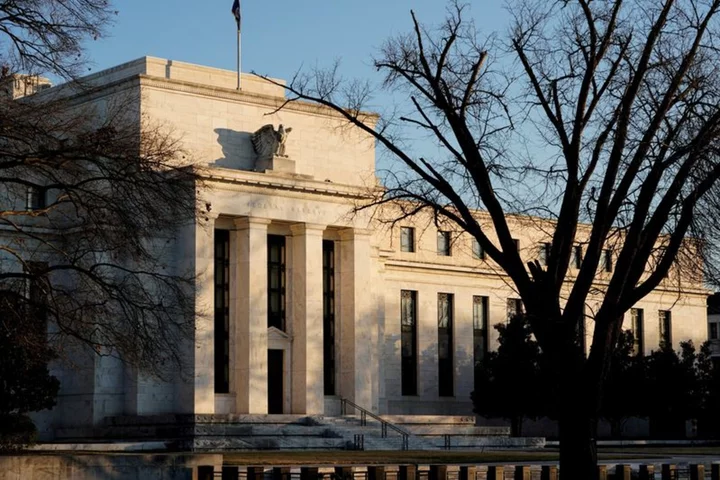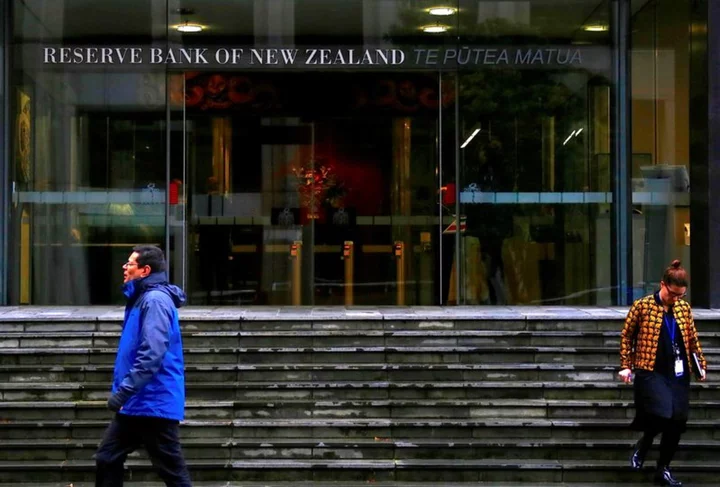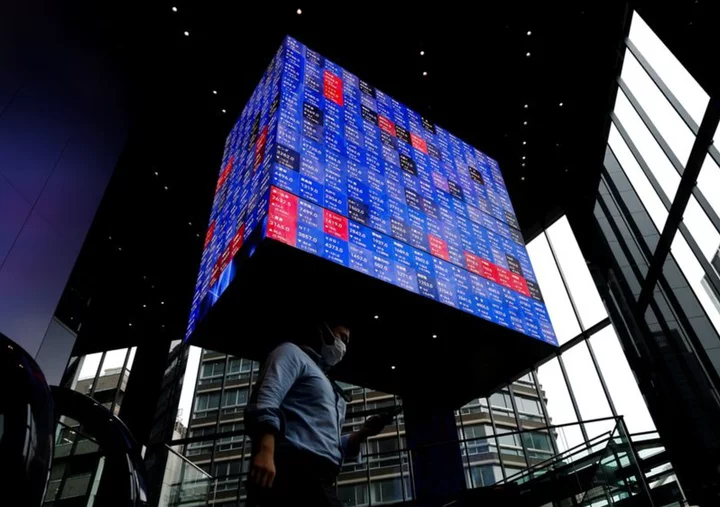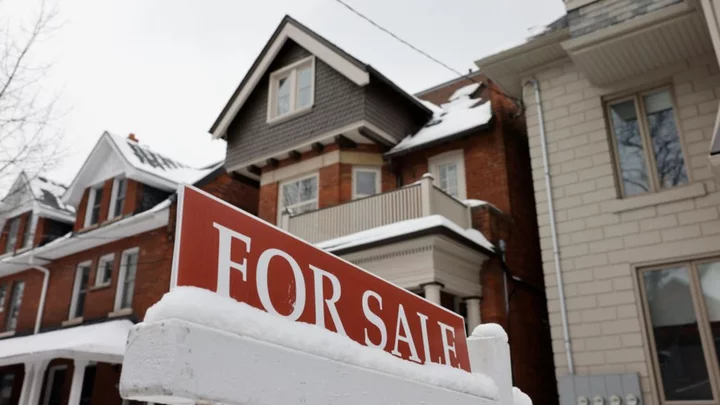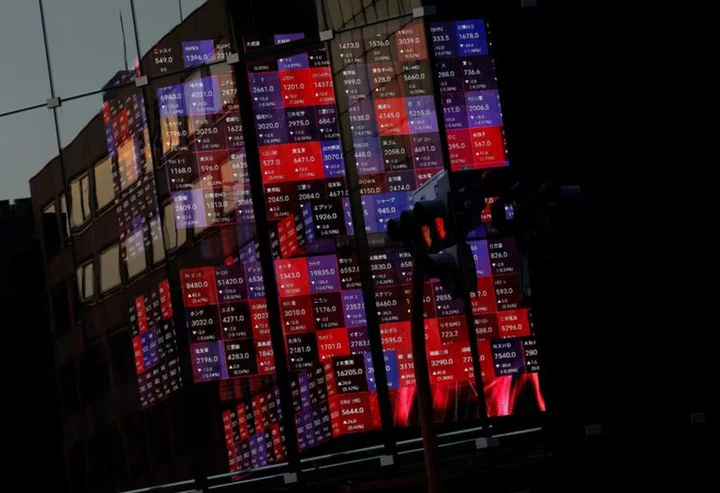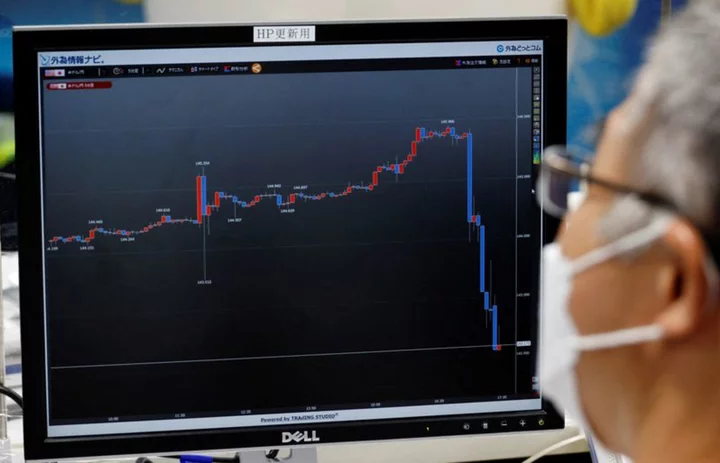Investors are torn over when global interest rates are likely to start falling, which is weighing on the dollar at a seasonally tricky time of year, meaning upcoming inflation data will be more important than ever, while China mulls its growth outlook.
World leaders gather in Dubai for a summit on climate change, but any agreement on how to deal with it or pay to tackle it seems a distant prospect.
Here's your week ahead in world markets from Lewis Krauskopf in New York, Kevin Buckland in Tokyo, and Naomi Rovnick, Marc Jones and Amanda Cooper in London.
1\BUCK UP, IT'S DECEMBER
The dollar is heading for its weakest monthly performance for a year, with a loss so far of 2.7%. The prospect of a rapid flip to rate cuts by the Federal Reserve next year has driven investors into beaten-down Treasuries, pushing yields down by the most in a month in four years and boosting stocks, at the expense of the dollar. The timing of this combination looks tricky for the greenback.
Seasonally, December is the worst month for dollar performance. Since 1973, the dollar has lost an average of 0.9% in December. But it does tend to recover those losses in January, with an average gain of 0.98%.
The stats don't favour a three-, or even a two-month, drop. There have been 16 years in which the dollar has fallen in November and December, but only four when it's fallen in November, December and the January of the following year.
2\CHINA'S DRIVE FOR FIVE
Despite the massive economic headwinds from a teetering property market and tepid domestic demand, compounded by record youth unemployment, China's top economic adviser plans to recommend a 5% growth target for a second year, Reuters exclusively reported on Nov 22.
To get there though, they say more fiscal stimulus is needed, as next year's number won't be flattered by the low base effect of 2021's stringent COVID-19 lockdowns. Markets clearly expect the same, with mainland equities drifting lower as investors bide their time.
So far, support measures have largely fallen short, meaning meeting this year's growth target will also be tight. On Thursday, China releases official manufacturing PMI data, which last month showed an unexpected contraction, killing momentum for an economic recovery.
3\EVEN COOLER THAN BEFORE
On the heels of an encouraging report on consumer prices, markets are hoping that another relatively tame U.S. inflation report can support the end of the Federal Reserve's interest rate hiking campaign.
The personal consumption expenditures (PCE) price index, due on Nov 30, is expected to show no change in October from the prior month, according to a Reuters poll. The PCE index rose 0.4% in September, matching the rise in August.
Another key inflation gauge, the consumer price index (CPI), was unchanged in October, lifting equity prices, as it bolstered the view that the Fed was probably done raising interest rates.
As investors assess how much the economy may be cooling, other key economic reports due in the coming days include a consumer confidence index on Nov 28. The October reading showed a third-straight monthly decline.
4\GOOD COP, BAD COP?
COP28 gets underway in Dubai and securing an agreement on how to tackle global warming and, crucially, how to pay for it looks as difficult as ever for the near 200 countries and institutions attending.
The main goals set out by COP President - and UAE oil boss - Sultan Ahmed Al Jaber are to speed up the move away from fossil fuels; supercharge climate finance; preserve biodiversity and a fabled "loss and damage" fund to ensure the poorest and most vulnerable countries are not left to fend for themselves.
With no consensus likely and pessimism around the key 1.5 degree warming target, the best that can be hoped for might be more money and focus from the big multilateral institutions like the World Bank, as well as deals on uncontroversial areas like tripling global renewable energy capacity.
5\THE ECB'S BALANCING ACT
Euro zone inflation data on Nov. 30 may well confirm a trend of price rises moderating.
But if traders react by bringing forward bets on when the European Central Bank might cut interest rates, expect monetary policymakers to push back.
After the ostensibly good news that consumer price rises slowed to 2.9% in October, ECB president Christine Lagarde warned borrowing costs would need to stay restrictive for many months ahead.
On Nov. 21, ECB officials were talking down market expectations that the central bank would lower its main deposit rate from a record 4% as soon as April 2024.
Policymakers remain wary of any hopes for rate cuts spilling over into increased bank lending and household spending, renewing inflationary pressures.
Euro zone bond yields, stuck in a narrow range, are predicting that this tug of war between market optimism and central bank caution will continue for quite some time.
(Compiled by Amanda Cooper; Editing by Toby Chopra)

